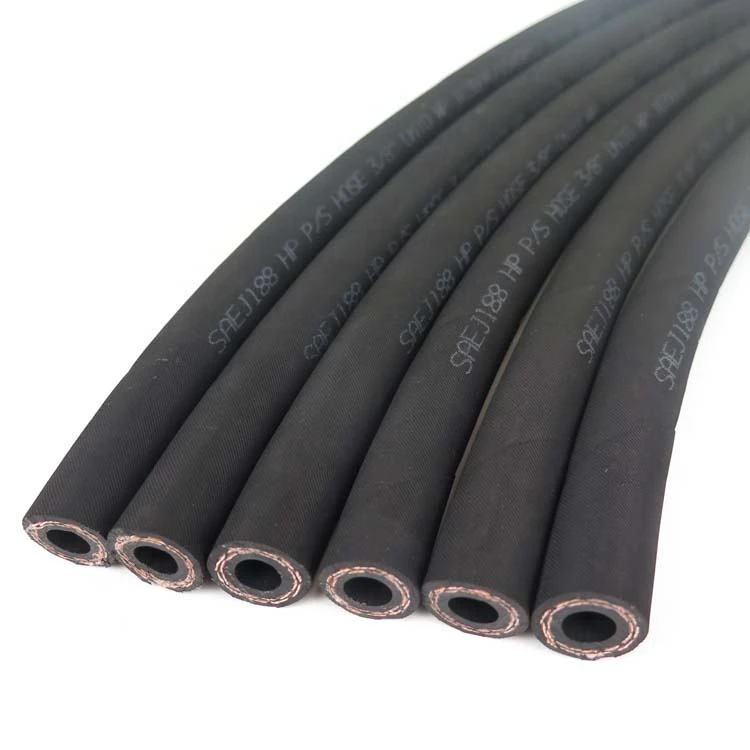Understanding the Importance of Brake Hose Pipes in Vehicle Safety and Performance
Understanding Brake Hose Pipes An Essential Component of Vehicle Safety
The brake system is one of the most critical safety features in vehicles, ensuring effective control and stopping power. Among the myriad components that contribute to the functionality of braking systems, the brake hose pipe plays a crucial role that is often overlooked by drivers and vehicle owners. This article delves into the significance, construction, types, and maintenance of brake hose pipes, emphasizing their vital role in automotive safety.
The Importance of Brake Hose Pipes
Brake hose pipes are flexible tubes that connect the brake pedal to the brake calipers or wheel cylinders. Their primary function is to transmit hydraulic brake fluid under pressure to engage the brakes. When the driver presses the brake pedal, hydraulic force is generated, which then is transmitted through the brake hose, causing the brake pads to squeeze against the rotors and bring the vehicle to a stop. Therefore, the integrity and reliability of brake hose pipes are paramount; any failure in this component can lead to brake loss, potentially resulting in catastrophic accidents.
Construction of Brake Hose Pipes
Brake hoses are typically made from a combination of materials designed to withstand high pressure and harsh conditions. The inner lining is usually comprised of synthetic rubber that is resistant to brake fluid, while the outer layer is reinforced with materials like steel or nylon to provide additional strength and protection against mechanical damage. The design allows for flexibility while maintaining structural integrity, enabling the hoses to accommodate the movement of suspension components during driving.
Types of Brake Hose Pipes
There are mainly two types of brake hose pipes the rubber hose and the braided stainless-steel hose.
1. Rubber Brake Hoses This is the most common type found in vehicles. They are generally less expensive and provide adequate performance for most driving conditions. However, rubber hoses can degrade over time due to exposure to heat, chemicals, and the elements. Hence, regular inspections are necessary to assess their condition.
2. Braided Stainless-Steel Brake Hoses These hoses are a popular aftermarket upgrade due to their increased durability and resistance to expansion under pressure. The stainless-steel braiding provides a protective layer that prevents abrasions and reduces the risk of rupture. Though more expensive, they offer superior performance, especially in high-performance and racing applications.
Symptoms of Brake Hose Issues
brake hose pipe

Recognizing potential problems with brake hose pipes can save drivers from dangerous situations. Here are some common signs that indicate issues with brake hoses
- Brake Fluid Leaks A visible leak around the hose usually indicates a crack or failure. - Soft or Spongy Brake Pedal If the brake pedal feels unresponsive or unusually soft, it might be due to air in the brake line or a failing brake hose.
- Abnormal Brake Response If the brakes feel inconsistent, such as grabbing suddenly or failing to engage properly, it could point to a damaged hose.
Maintenance and Replacement
Given the critical role of brake hose pipes in ensuring vehicle safety, regular maintenance is essential. Vehicle owners are advised to
- Conduct Regular Inspections Look for any signs of wear, tear, or leaks. Inspect the connections to ensure there is no corrosion or loose fitting.
- Replace Worn Hoses Most manufacturers recommend replacing brake hoses every 4 to 6 years, regardless of visible wear, to preemptively avoid failures.
- Use Quality Parts When replacing brake hoses, it's advisable to use original equipment manufacturer (OEM) parts or high-quality aftermarket equivalents to ensure reliability and performance.
Conclusion
In summary, brake hose pipes play a vital role in the overall braking system of a vehicle, contributing significantly to safety. Understanding their function, types, and maintenance requirements can empower vehicle owners to make informed decisions. Regular inspections and timely replacements can prevent potential failures that may lead to severe consequences. By prioritizing the health of brake hose pipes, drivers can ensure their vehicle's braking system operates at peak efficiency, promoting safer roads for everyone.
-
Ultimate Spiral Protection for Hoses & CablesNewsJun.26,2025
-
The Ultimate Quick-Connect Solutions for Every NeedNewsJun.26,2025
-
SAE J1401 Brake Hose: Reliable Choice for Safe BrakingNewsJun.26,2025
-
Reliable J2064 A/C Hoses for Real-World Cooling NeedsNewsJun.26,2025
-
Heavy-Duty Sewer Jetting Hoses Built to LastNewsJun.26,2025
-
Fix Power Steering Tube Leaks Fast – Durable & Affordable SolutionNewsJun.26,2025

